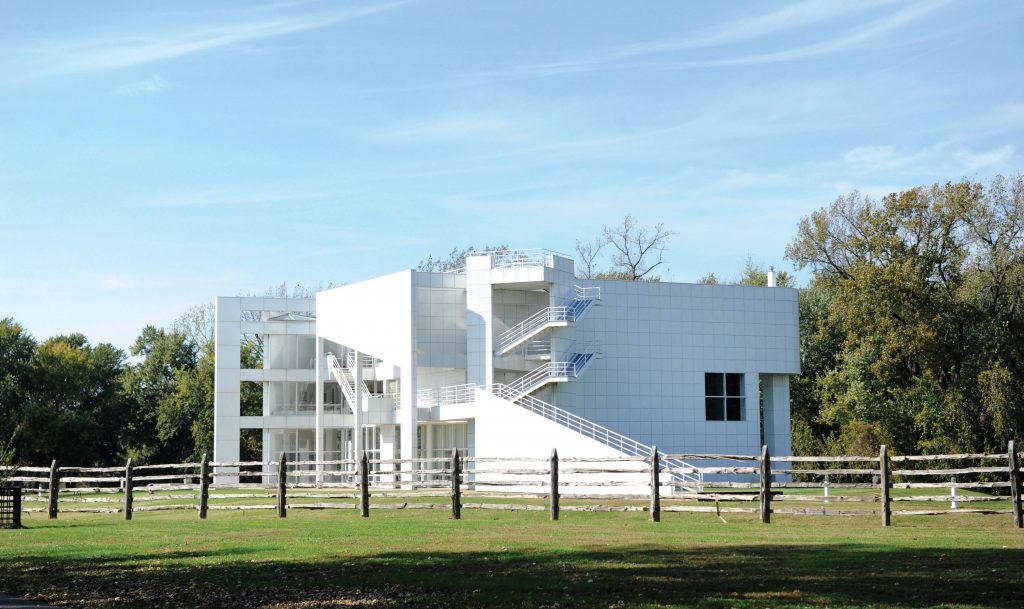
Robert Owen’s Utopian experiment in New Harmony, Indiana, may have lasted only a few short years. But through the coming months of 2021, his legacy in the historic and beautiful southwestern Indiana Wabash River town will be revisited in various in-person and virtual events celebrating his 250th birthday.
Owen was the Welsh-born industrialist and social reformer who attempted to create the second Utopian society in America in New Harmony. Along with William Maclure, an educator and geologist, Owen purchased the successful religious community in 1825 from George Rapp and the Harmonie Society.
Rapp and the Harmonists founded the town in 1814, coming to the Indiana Territory outpost from Pennsylvania. The religious society constructed 180 buildings in the 10 years they were Indiana, and many are still standing today. Under the leadership of Rapp, a German immigrant, the hard-working Harmonists built a thriving town. But in 1824, they moved back to Pennsylvania to be closer to the large markets in the East for their products.
Unlike Rapp’s religious group, Owen’s society was based on Owen’s socialist vision of equal education and equal social status. Owen enticed many scientists and educators from the East to join him in New Harmony — arriving by river on what became known as the “Boatload of Knowledge.” Numerous scientists and educators contributed to New Harmony’s intellectual community.
Though the Utopian vision eventually dissolved under the unsustainable lack of skilled craftsmen and laborers and experienced leaders, New Harmony became known as a center for advances in education and scientific research. Town residents established the nation’s first public school system open to both boys and girls, the state’s first free library, and a civic drama club.
More than 30 structures from the Harmonist and Owenite Utopian communities remain as part of the New Harmony Historic District, which is a National Historic Landmark. Historic New Harmony is directed by the University of Southern Indiana. In addition, New Harmony’s modern Atheneum, which has just reopened after several months of renovation, serves as the Visitors Center for Historic New Harmony and depicts the history of the community.
In addition to the historical remnants of the early Utopian societies, the quaint town is full of life with other historic buildings, distinctive one-of-a-kind eateries and specialty shops, antiques, art galleries, festivals, and later attractions like the Roofless Church and the labyrinths. After visiting New Harmony, you might believe Owen’s vision didn’t really fail but was merely deferred. Today, New Harmony IS a Utopian place to visit on the Wabash River after all.
If you go …
Tour tickets may be purchased at the Atheneum Visitors Center, 401 N. Arthur St. (corner of North and Arthur streets). Information on ticket sales and scheduling tours can be obtained by calling 812-682-4474 or 800-231-2168.
Tours include an orientation film at the Atheneum/Visitors Center, Atheneum exhibits, special programming (if available) and access to numerous historic sites and special exhibits. Visitors should set aside approximately two hours for a typical tour. Tour pricing varies.
Because of the ongoing pandemic, please visit https://visitnewharmony.com and www.usi.edu/outreach/historic-new-harmony for up-to-date details on community activities and Historic New Harmony events, dates, times and tours.



